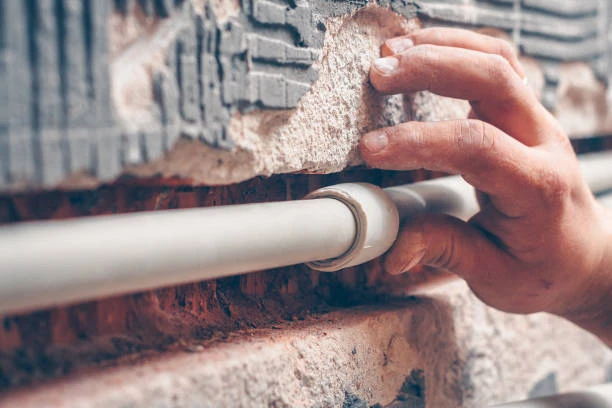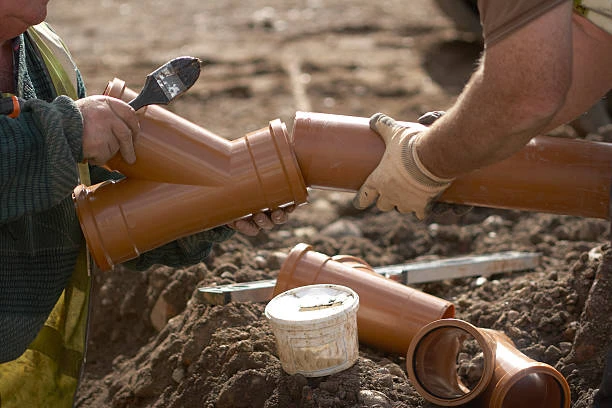Introduction to PPR Pipe Fittings
Polypropylene Random Copolymer, commonly referred to as PPR, has been a game-changer in the plumbing industry, offering a durable, eco-friendly, and versatile option for piping solutions. PPR pipe fittings have become essential for modern plumbing due to their high resistance to heat, pressure, and chemical corrosion. Let’s explore the development history of PPR pipe fitting, from their inception to their vital role in today’s plumbing systems.
The Early Days of Plumbing and Pipe Fittings
In ancient civilizations, plumbing systems relied heavily on materials such as lead, clay, and copper. While these materials helped advance early plumbing, they had drawbacks like rust, corrosion, and even health risks, particularly with lead pipes. As technology advanced, the need for safer, more reliable materials for water transportation became evident.
Emergence of Plastic in Pipe Fittings
The 20th century saw the introduction of plastic as a practical alternative for plumbing materials. Compared to metal pipes, plastic options were affordable, corrosion-resistant, and easy to install. Polyvinyl chloride (PVC) was one of the first plastics used for piping, setting the stage for further development in polymer-based pipes.
What is PPR and Why It Was Chosen for Pipe Fitting
PPR is a type of polypropylene, a thermoplastic known for its excellent heat tolerance, flexibility, and resistance to physical and chemical stress. Its properties make it ideal for applications where both hot and cold water are transported. Additionally, PPR is environmentally friendly, non-toxic, and has a long lifespan, making it preferable for water piping systems compared to other plastic materials.
The Invention and Adoption of PPR Pipe Fittings
PPR fittings first gained popularity in Europe during the 1980s. Their resilience to high temperatures and pressure, combined with their ease of installation, made them an instant hit in the plumbing industry. As environmental awareness grew, the demand for non-toxic, sustainable piping materials rose, leading to the rapid adoption of PPR across Europe, Asia, and the Americas.
Technological Innovations in PPR Fittings Manufacturing
The production process of PPR fittings has evolved significantly over the years. Early PPR pipes were manufactured manually, but advancements in automation have streamlined the process, ensuring higher precision and consistency in product quality. Additionally, innovations in precision engineering allow for the creation of fittings that meet strict industry standards for plumbing safety.
Applications and Benefits of PPR Pipe Fittings
PPR fittings are used across a wide range of applications, from residential to industrial plumbing systems. Their primary benefits include:
- Durability – PPR fittings can withstand high-pressure levels without cracking or leaking.
- Corrosion Resistance – Unlike metal pipes, PPR does not rust or corrode.
- Thermal Stability – PPR can handle temperatures up to 95°C, making it ideal for both hot and cold water systems.
- Eco-Friendliness – PPR is non-toxic and fully recyclable.
Development of Global Standards for PPR Fittings
As PPR gained popularity, international organizations introduced standards to maintain consistent quality. Standards such as DIN 8077 and DIN 8078 specify the properties, dimensions, and quality criteria for PPR pipes and fittings. These standards ensure that consumers receive reliable, safe products that perform optimally under specified conditions.
Expansion of PPR Fittings in Various Sectors
Initially popular in residential plumbing, PPR fittings quickly expanded to commercial and industrial sectors. They are widely used in HVAC systems, food and beverage processing, and even in agriculture. Their flexibility and compatibility with existing systems make them an attractive choice across multiple industries.
Challenges Faced by PPR Pipe Fittings
While PPR remains a popular choice, it faces competition from alternative materials like cross-linked polyethylene (PEX) and chlorinated polyvinyl chloride (CPVC). Additionally, the production of PPR fittings raises environmental concerns, as polypropylene is derived from petroleum. As consumers prioritize sustainability, manufacturers face pressure to minimize environmental impact.
Emergence of Eco-Friendly and Recyclable Options
Responding to environmental concerns, the industry has explored new methods to make PPR production more sustainable. Some manufacturers are now incorporating recycled materials into their products, while others are working on PPR alternatives made from renewable resources. This shift towards sustainability is essential to the future of the PPR market.
Recent Trends in PPR Fittings
PPR fittings have adapted to modern plumbing demands, such as smart home systems and compatibility with advanced HVAC solutions. Modern PPR fittings are now designed for quick installation, longer durability, and seamless integration with electronic water management systems. These trends reflect the growing need for advanced, user-friendly plumbing options.

Future of PPR Pipe Fittings
The future of PPR pipe fittings looks promising, with continued innovation in manufacturing and product design. Research into more eco-friendly materials and production methods may reduce environmental impact, while improvements in durability could extend the lifespan of PPR fittings. As global demand for sustainable solutions grows, PPR is likely to remain a key player in plumbing.
Conclusion
PPR pipe fitting have come a long way since their invention, revolutionizing the plumbing industry with their resilience, eco-friendliness, and adaptability. With constant advancements in technology and a growing focus on sustainability, PPR fittings are poised to meet the needs of future plumbing systems worldwide.
FAQs
- What are the main benefits of PPR pipe fittings?
PPR fittings are durable, corrosion-resistant, thermally stable, and environmentally friendly, making them ideal for various plumbing applications. - Why did PPR pipe fittings become popular in the plumbing industry?
PPR pipe fittings gained popularity due to their ability to withstand high temperatures, resist chemical corrosion, and provide a longer lifespan than many alternative materials. - Are PPR pipe fittings recyclable?
Yes, PPR fittings are recyclable, which aligns with the growing demand for sustainable plumbing materials. - What sectors use PPR pipe fittings most commonly?
PPR pipe fittings are commonly used in residential, commercial, industrial, and agricultural sectors, primarily for water supply systems. - What are the future trends for PPR pipe fittings?
Future trends include the development of eco-friendlier production methods, increased compatibility with smart plumbing systems, and innovations aimed at improving longevity and efficiency.


















